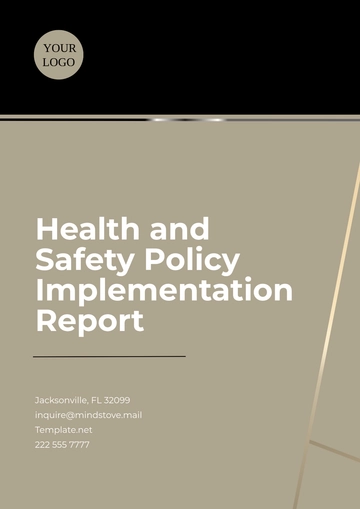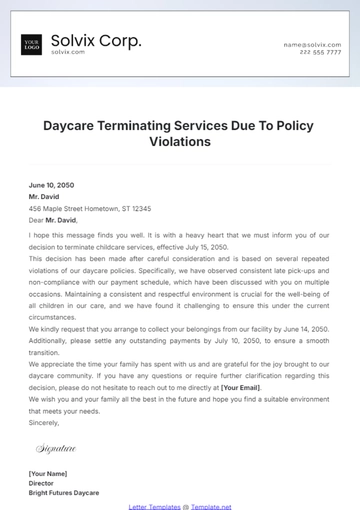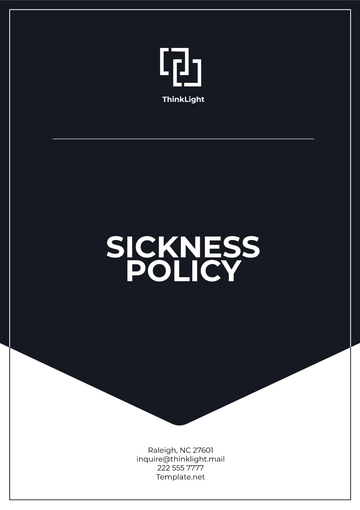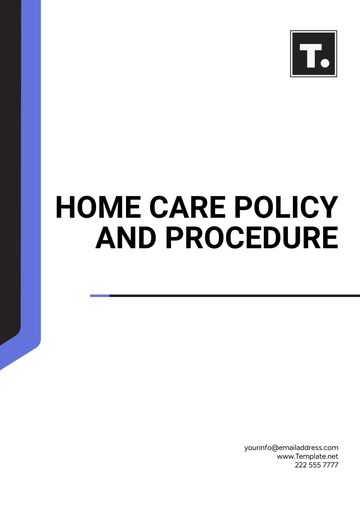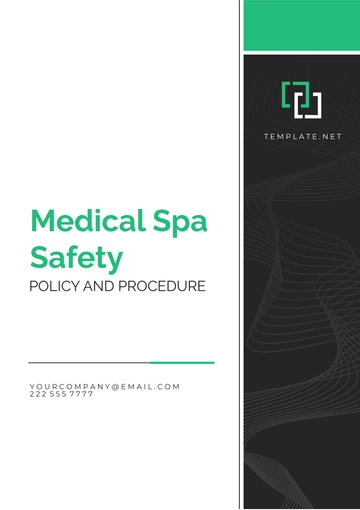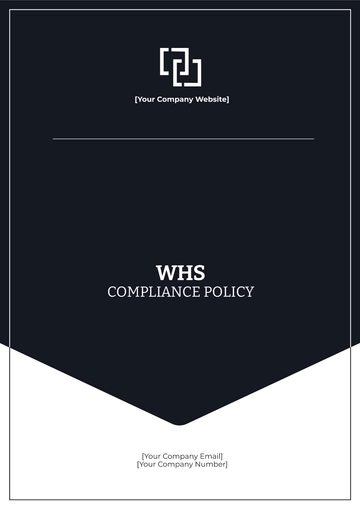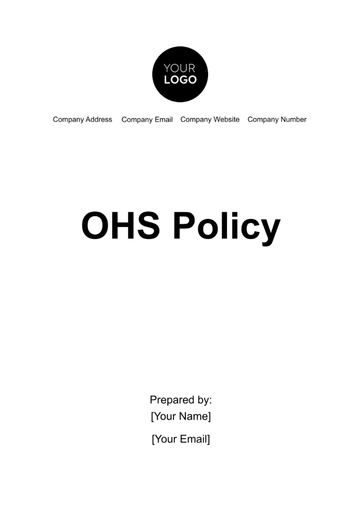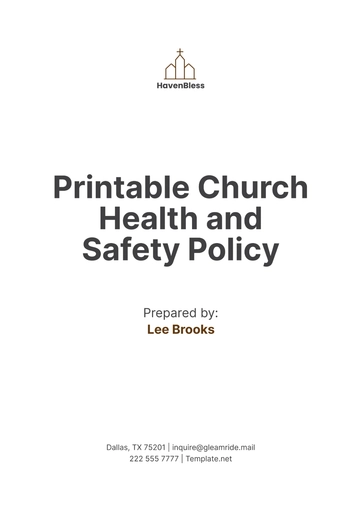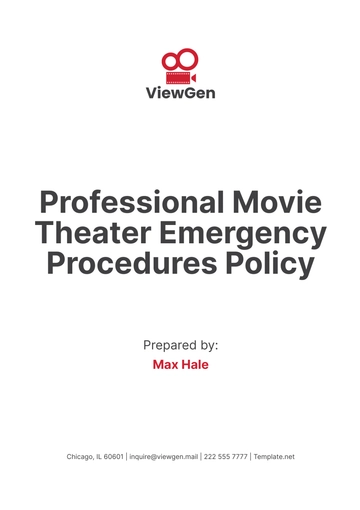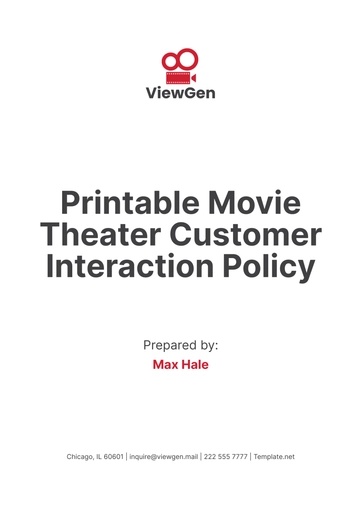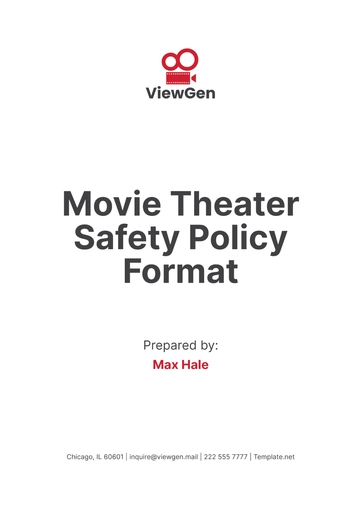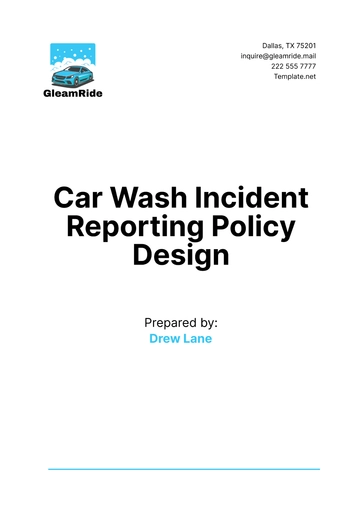Free Gym Complaints Policy
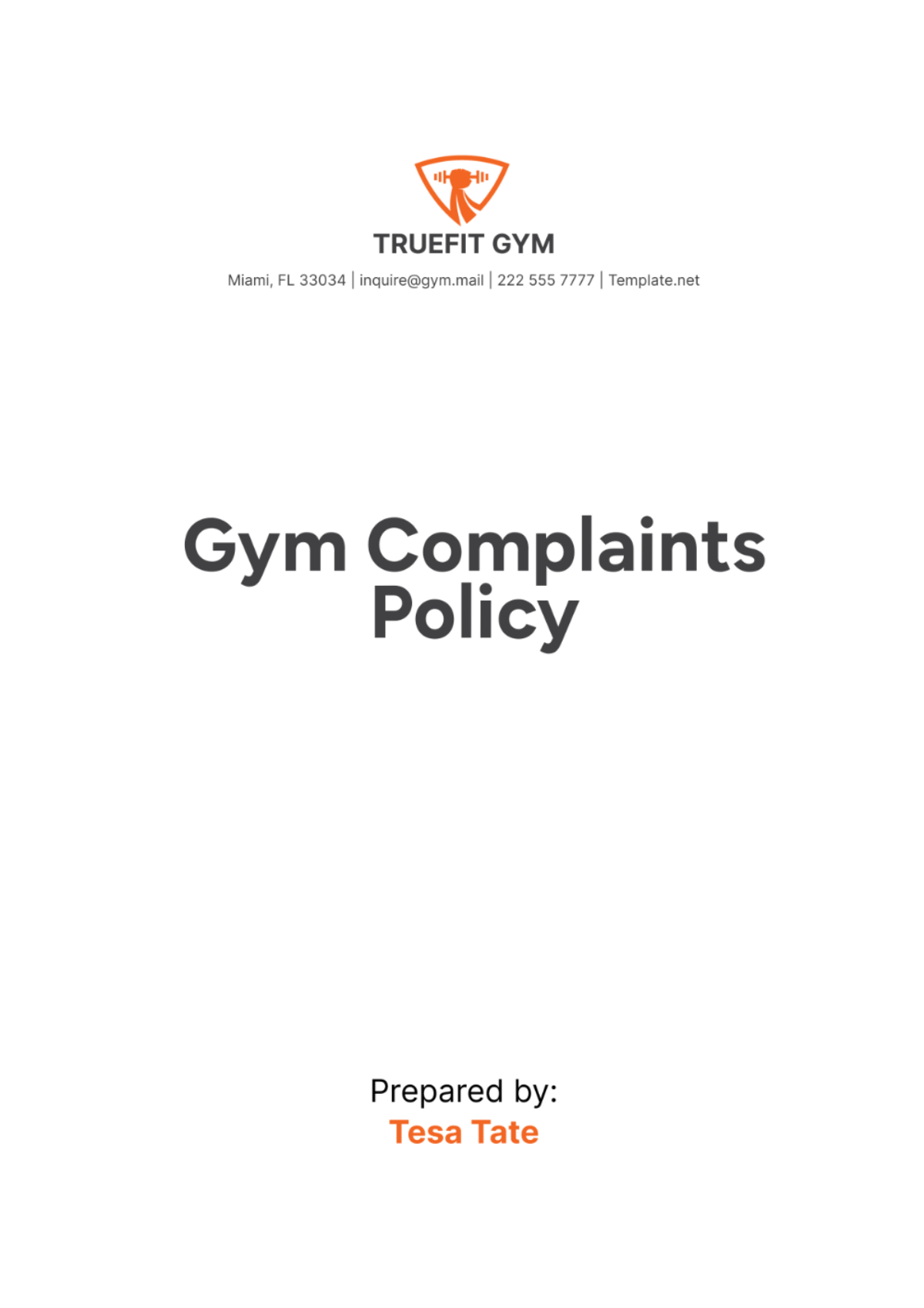
Date of Implementation: January 1, 2050
1. Purpose
1.1. The Gym Complaints Policy for [Your Company Name] serves as a foundational framework designed to ensure that grievances raised by both members and staff are promptly and equitably addressed. It aims to create a supportive environment where concerns can be effectively resolved, fostering a culture of open communication and accountability within the organization.
1.2. This policy establishes clear guidelines and procedures for the lodging, investigation, and resolution of complaints, aiming to streamline the process and minimize misunderstandings. By providing structured pathways for addressing grievances, [Your Company Name] enhances transparency and trust among all stakeholders involved in the gym community.
1.3. [Your Company Name] applies this policy universally across its operations to guarantee that all members, staff, and management are treated fairly and consistently. This universal application ensures that every individual within the gym environment understands their rights and responsibilities in the complaint resolution process, thereby promoting a fair and supportive workplace culture.
2. Scope
2.1. The Gym Complaints Policy covers a comprehensive range of issues that may prompt complaints, including but not limited to equipment malfunctions, staff conduct, cleanliness standards, and service delivery. This broad scope ensures that any concern affecting the gym's operations, facilities, or services can be addressed under this policy.
2.2. It is applicable to all stakeholders within [Your Company Name], including gym members, staff, and management, irrespective of their role or position. By encompassing all levels of the organization, the policy guarantees consistent application and adherence to established procedures for addressing complaints effectively.
3. Policy Statement
3.1. [Your Company Name] is dedicated to addressing all complaints in a timely, impartial, and fair manner. We uphold principles of procedural fairness and accountability throughout the complaint resolution process, ensuring that every complaint is handled with due diligence and respect for all parties involved.
3.2. The policy emphasizes transparency and structured procedures to guide the handling of complaints. By providing clear steps for lodging complaints, conducting investigations, and communicating outcomes, [Your Company Name] aims to uphold the rights and responsibilities of complainants and respondents alike.
4. Definitions
4.1. Complaint: A formal expression of dissatisfaction regarding any aspect of gym operations, facilities, or services.
4.2. Complainant: The individual lodging the complaint.
4.3. Respondent: The individual or entity against whom the complaint is filed, subject to investigation and resolution.
5. Procedures
Step 1: Filing a Complaint
a. Complaints may be lodged through multiple channels, including email ([Your Company Email]), phone ([Your Company Number]), or in person at the gym reception desk. This variety of options ensures accessibility and convenience for complainants, allowing them to choose the method most suitable for their needs.
b. Complainants are required to provide essential details when filing a complaint, including the date and time of the incident, a detailed description of the issue, names of involved parties, and the desired resolution. This comprehensive information helps facilitate a prompt and effective investigation process.
Step 2: Acknowledgement and Initial Review
Upon receipt of a complaint, [Your Company Name] commits to acknowledging receipt within 2 business days. This prompt acknowledgment demonstrates responsiveness and reassures complainants that their concerns are being taken seriously.
The initial review phase involves assessing the nature and seriousness of the complaint to determine the appropriate course of action. This includes identifying key stakeholders, assigning responsibilities to the designated complaint resolution team, and setting timelines for investigation and resolution.
Step 3: Investigation
An investigation is conducted by the designated complaint resolution team, comprising trained personnel tasked with gathering pertinent information. This process may involve interviewing complainants, witnesses, and individuals implicated in the complaint, as well as reviewing relevant documents or records.
The investigation aims to uncover facts, assess the validity of claims, and determine the extent of any breach or issue raised in the complaint. Throughout this stage, [Your Company Name] maintains confidentiality and impartiality, ensuring a thorough and unbiased assessment.
Step 4: Resolution
Within 10 business days of receiving the complaint, [Your Company Name] provides a formal response to the complainant. This response outlines the findings of the investigation, including any substantiated facts, conclusions drawn, and proposed resolutions or actions to address the complaint.
The resolution is communicated clearly and transparently to the complainant, detailing the steps taken to address their concerns and any changes implemented to prevent recurrence. This step emphasizes [Your Company Name]'s commitment to accountability and continuous improvement.
Step 5: Appeal
In cases where the complainant is dissatisfied with the resolution provided, they have the right to appeal within 5 business days of receiving the response. The appeal is reviewed by senior management or an appointed appeals panel, ensuring an independent and objective assessment of the initial decision.
Senior management conducts a thorough review of the appeal, considering all relevant information and perspectives presented. A final decision is communicated to the complainant within 15 business days from the date of appeal submission, outlining the rationale behind the decision and any further actions or resolutions proposed.
This comprehensive approach to complaint handling ensures that [Your Company Name] maintains integrity, fairness, and adherence to established procedures throughout the complaints resolution process. By outlining clear steps and timelines, [Your Company Name] aims to instill confidence in stakeholders while effectively addressing and resolving complaints within its gym environment.
6. Confidentiality
6.1. Confidentiality is of utmost importance in [Your Company Name]'s handling of all complaints. All information and details related to complaints, including the identities of complainants and respondents, are treated with strict confidentiality. This ensures that sensitive information is protected and only disclosed on a need-to-know basis among authorized personnel involved in the investigation and resolution process.
6.2. Information disclosed during the complaints process is strictly limited to individuals directly engaged in the investigation and resolution to maintain privacy and prevent unauthorized disclosure. This restriction extends across all stages of the complaints procedure, from the initial receipt of a complaint through to its final resolution and any subsequent appeals.
6.3. [Your Company Name] adheres rigorously to relevant privacy laws and regulations to safeguard the sensitive information provided during the complaints process. This commitment ensures compliance with data protection standards and reinforces trust and confidence among stakeholders in the gym community.
6.4. Breaches of confidentiality are treated seriously and may result in disciplinary action. This policy underscores [Your Company Name]'s dedication to upholding trust and respect among its members, staff, and management, emphasizing the importance of maintaining confidentiality throughout the complaint handling process.
6.5. Employees and management involved in handling complaints receive training on confidentiality protocols and secure handling of sensitive information. This training ensures that all personnel understand their roles and responsibilities in maintaining confidentiality and upholding the organization's standards of privacy protection.
6.6. By maintaining strict confidentiality standards, [Your Company Name] aims to create a safe and supportive environment where individuals feel confident in raising concerns without fear of unauthorized disclosure. This approach fosters transparency and accountability, contributing to a positive organizational culture.
7. Record Keeping
7.1. [Your Company Name] maintains comprehensive records of all complaints received and actions taken for a minimum period of 3 years. These records serve as a critical repository of information detailing the nature of each complaint, dates of receipt and resolution, individuals involved, investigation findings, and any corrective measures implemented.
7.2. The detailed documentation of complaints allows [Your Company Name] to identify trends, track recurring issues, and implement proactive measures to address systemic concerns. This proactive approach supports continuous improvement in service delivery and operational practices within the gym.
7.3. Records are stored securely in accordance with established data protection protocols to prevent unauthorized access, loss, or tampering. [Your Company Name] employs robust security measures to safeguard complaint records, ensuring confidentiality and integrity throughout their retention period.
7.4. Access to complaint records is restricted to authorized personnel involved in the complaints process or those with a legitimate operational or legal need to know. This restricted access ensures that sensitive information is only accessible to individuals directly involved in addressing and resolving complaints.
7.5. Regular audits of complaint records are conducted to verify compliance with internal policies and regulatory requirements. These audits serve to validate the accuracy and completeness of record-keeping practices, reinforcing [Your Company Name]'s commitment to accountability and transparency.
7.6. By maintaining thorough and organized records, [Your Company Name] demonstrates its commitment to accountability and transparency in handling complaints. The systematic documentation of complaints and their resolutions supports informed decision-making and enhances trust among stakeholders, fostering a positive and supportive gym environment.
8. Contact
If you have any questions or need further assistance regarding this Gym Complaints Policy, please contact us at:
Email: [Your Company Email]
Phone: [Your Company Number]
9. Review and Update
The Gym Complaints Policy of [Your Company Name] is subject to annual review to assess its effectiveness in handling complaints and promoting a positive gym environment. This systematic review ensures that the policy remains aligned with evolving organizational needs, industry standards, and regulatory requirements.
The annual review process involves evaluating the policy's implementation, identifying any areas for improvement, and incorporating feedback from stakeholders, including members, staff, and management. This feedback-driven approach allows [Your Company Name] to continuously refine its complaint handling procedures to better meet the needs and expectations of its gym community.
Furthermore, updates to the policy are made as necessary to address emerging trends in complaint types, technological advancements, and changes in legal or regulatory frameworks related to privacy and data protection. By staying abreast of these developments, [Your Company Name] maintains a proactive stance in enhancing the effectiveness and efficiency of its complaint resolution processes.
The review and update cycle also serves as an opportunity to reinforce training and awareness initiatives among employees and management involved in handling complaints. Regular training sessions ensure that all personnel are informed of any policy revisions, understand their roles in complaint resolution, and are equipped with the necessary skills to uphold confidentiality, procedural fairness, and customer-centricity.
Additionally, [Your Company Name] communicates updated versions of the Gym Complaints Policy promptly to all relevant stakeholders, ensuring transparency and accountability in policy implementation. This communication includes clear guidelines on how stakeholders can access the latest version of the policy and provides avenues for seeking clarification or further information.
By committing to annual review and necessary updates, [Your Company Name] demonstrates its dedication to maintaining a robust framework for handling complaints effectively and fostering a positive and supportive gym environment. This proactive approach not only enhances stakeholder confidence but also contributes to continuous improvement and excellence in customer service delivery within the organization.
Policy Effective Date: January 1, 2050
Reviewed Date: January 1, 2051
- 100% Customizable, free editor
- Access 1 Million+ Templates, photo’s & graphics
- Download or share as a template
- Click and replace photos, graphics, text, backgrounds
- Resize, crop, AI write & more
- Access advanced editor
Ensure smooth customer interactions with our Gym Complaints Policy Template, exclusively at Template.net. This customizable and fully editable document provides a clear framework for addressing complaints effectively. Tailored for marketing professionals, it’s easy to use and editable in our AI Editor Tool. Enhance your gym's reputation and client satisfaction with our comprehensive, user-friendly template.
You may also like
- HR Policy
- Restaurant Policy
- Company Policy
- Accounting Policies and Procedures
- Website Policy
- Privacy Policy
- Safety Policy
- School Policy
- IT and Software Policy
- Law Firm Policy
- Construction Policy
- Interior Design Policy
- Travel Agency Policy
- Education Academic Policy
- Security Policy
- Real Estate Policy
- Expense Policy
- Software Policy



